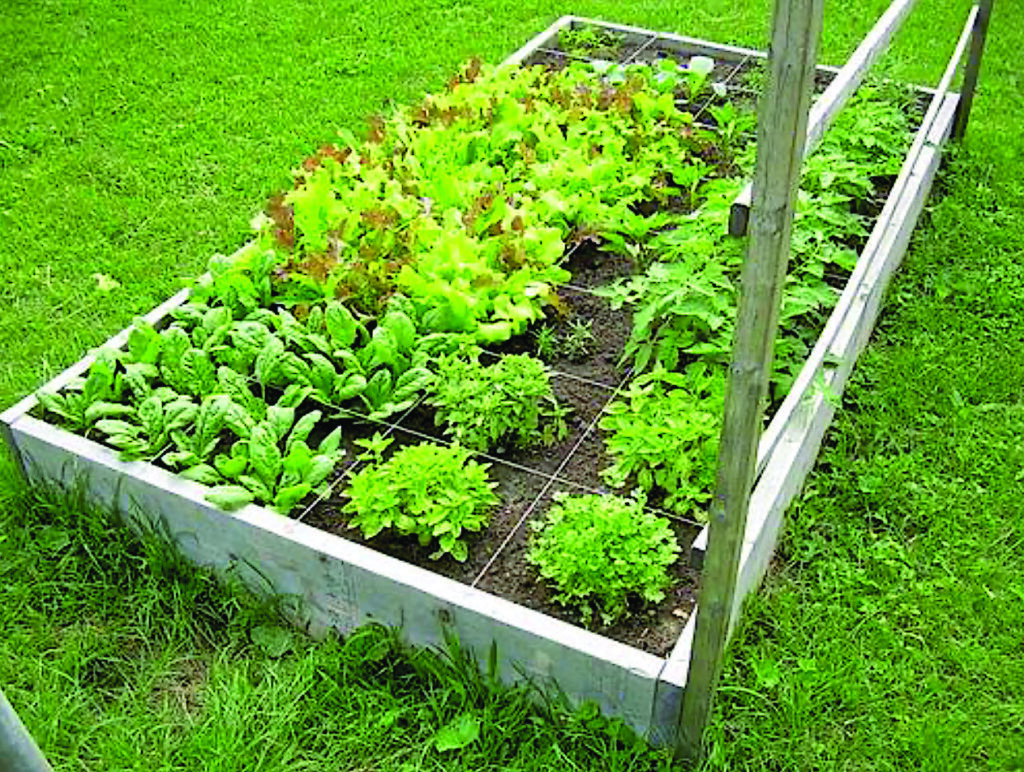Give Yourself a Raise -Square Foot Gardening
go.ncsu.edu/readext?963081
en Español / em Português
El inglés es el idioma de control de esta página. En la medida en que haya algún conflicto entre la traducción al inglés y la traducción, el inglés prevalece.
Al hacer clic en el enlace de traducción se activa un servicio de traducción gratuito para convertir la página al español. Al igual que con cualquier traducción por Internet, la conversión no es sensible al contexto y puede que no traduzca el texto en su significado original. NC State Extension no garantiza la exactitud del texto traducido. Por favor, tenga en cuenta que algunas aplicaciones y/o servicios pueden no funcionar como se espera cuando se traducen.
Português
Inglês é o idioma de controle desta página. Na medida que haja algum conflito entre o texto original em Inglês e a tradução, o Inglês prevalece.
Ao clicar no link de tradução, um serviço gratuito de tradução será ativado para converter a página para o Português. Como em qualquer tradução pela internet, a conversão não é sensivel ao contexto e pode não ocorrer a tradução para o significado orginal. O serviço de Extensão da Carolina do Norte (NC State Extension) não garante a exatidão do texto traduzido. Por favor, observe que algumas funções ou serviços podem não funcionar como esperado após a tradução.
English
English is the controlling language of this page. To the extent there is any conflict between the English text and the translation, English controls.
Clicking on the translation link activates a free translation service to convert the page to Spanish. As with any Internet translation, the conversion is not context-sensitive and may not translate the text to its original meaning. NC State Extension does not guarantee the accuracy of the translated text. Please note that some applications and/or services may not function as expected when translated.
Collapse ▲Does your landscape have drainage problems? Are you limited to a confined space to have a garden or flower bed? If so, you can still be successful growing your plants by creating raised beds. These beds can be useful for growing vegetables, annuals, bulbous plants, herbaceous perennials, or whatever you desire.
A raised bed can be just what it sounds like: a mound of dirt. Generally, to prevent erosion a barrier is built. However, a barrier is not always needed. Barriers are often site-dependent. If a barrier is desired there is no need to try to build a fort around the soil. The bed can be as high as you wish or as low to the ground as you wish. The material used to build the bed can be whatever you select.
A simple weekend’s work: Select your site and make sure you locate the bed in an area that will suit the plants you intend to grow. Next, prepare the soil by loosening/tilling the existing soil to a depth of eight to ten inches. This will aid in drainage, improve aeration, and allow you to remove weeds, rocks, and other debris. Then, choose the materials that you want to build your raised bed with. Finally, determine the filler you will be using to make the raised bed complete. Now, you are ready to build and plant.
The materials you choose to use is up to you. However, some materials may be better suited for certain areas. The following are some examples of materials that can be used.
- Pressure-treated wood (2-by-8s, 2-by-10s, 4-by-4s, or 6-by-6s) and a handful of nails or bolts will be a quick and easy way to make a raised bed.
- Landscape timbers, treated 3-by-5s with curved sides, is another simple material to use. These can be stacked three or four high.
- Railroad ties are large and bulky, but can be used. The old ties do not look as good as new ones; however, they are cheaper and they do not contain the heavy amounts of creosote that the new ones do. Typically, railroad ties are not a good choice to build vegetable gardens with due to the possible creosote leaching into the soil.
- Bricks and cinder blocks may blend in better and are extremely durable. You can stucco the cinder blocks if you wish.
- Stone is extremely easy to use. You can either dry-stack the stone or mortar it. You might be surprised at how much you enjoy working with the stone because it is similar to putting a puzzle together.

Raised bed square foot garden courtesy shygantic, via a Creative Commons license.
Soil additives for a raised bed garden can vary. Bagged products such as topsoil, potting soil, humus, or soil conditioner are available. These are all excellent materials that have been treated, so there is little chance of an introduction of weeds or diseases. Screened topsoil is a cheaper alternative if you have some available or you can buy it. Compost is an excellent additive. I once heard someone refer to it as “black gold.” You can make your own compost by composting your leaves, any grass clippings you might have, and vegetable scraps. Compost will help add nutrients to your soil in the bed. Rocks may also be used as an additive. Pea-gravel or small-sized pebbles can be used to improve drainage and aerate the soil. The small stone can also aid in vole control if you have experienced those small creatures. The voles do not like the sharp rocks.
Raised beds are widely used in many home landscapes and some of the most exquisite landscapes across the country. With a little time and effort, you can give yourself a raised bed garden that is easy to manage.
For more information about raised beds or square-foot gardening, contact your local N.C. Cooperative Extension, Franklin County Center at 919-496-3344.




